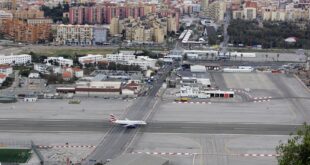Santa Fe, for most people, is a place that they vaguely remember from Western films of the 1950s. Santa Fe as it was originally known is Andalucian. It’s much more interesting.
Let’s start by talking about the Vega Granada.
Again, Las Vegas The name of this casino is familiar from movies and TV (maybe you have been there, and lost your shirt at the famous casinos), however the real history of the casino is quite different. Vega It is richer than most people think.
In Spanish: Vega It is a fertile plateau, enclosed by mountain ranges.
Granada’s Vega has been largely man-made. The Arabs, who settled in this area 1,400 years before Christ, saw the potential of it. With their engineering genius, they created an Eden-like garden.
They created a vast, flat area of black soil by sculpting and controlling the run-off from the Sierra Nevada Mountains. This allowed almost anything to grow.
Even today, water channels (acequías) of the Vega make this one of the most productive farmlands of the world, and the signal each evening to lift the dagger-boards and let the water flow comes (as it did in Arab times) from a bell rung inside the Alhambra.

Santa Fe is at the heart of the Vega.
This subtropical paradise, with its persimmons & avocados, was created solely for war.
By 1490, it was clear that the Arab Empire in Europe would eventually collapse. Only Granada remained.
Ferdinand and Isabel were the so-called Catholic monarchs who had just united Spain and were riding on a wave popular acclaim.
They felt that the Reconquest’s completion would solidify their place in history. Since 200 years, the Christians have been reclaiming Spain from the Islamic invasion. Now the final victory is near.
As a prelude to an attack on Granada, they needed a Christian symbol to name their vast military base, which was located west of the city. They called it Santa Fe, or Holy Faith.


The campaign that followed lasted for two years.
While victory was being won (January 1492), a strange Italian venture-capitalist was spotted hanging around Santa Fe. (The army camp was beginning to morph into permanent town).
Santa Fe’s modern streets still follow the gridiron layout of the original military base.
Christopher Columbus was this stranger. A man who was obsessed with reaching Japan by sailing to the west. All he had to do was find money. He thought that the young, successful rulers of Spain would be willing to pay the money.
READ MORE
He was correct. On 17 April, 1492, the ‘Capitulations’ were signed, and the discovery of America (though nobody guessed it at the time) was assured. Santa Fe has a festival every year on this date.
A curious event occurs on the opening night of Santa Fe’s feria, on or around 28 August – the burning of El Penas. This tradition was imported by Santa Fe, New Mexico. The New World has influenced the Old.


A committee (in secret) compiles a list with all the negative things that have occurred in the last year. Undercover, cardboard models are made of the events.
It culminates with a community bonfire at which everyone’s invited. penas (Sorrows are) burned. Everyone drinks SingularitySanta Fe begins a new year.
Santa Fe, which is only eight miles south of Granada and has some interesting restaurants, may not be the best place to stop for a quick visit, but you can enjoy a meal there.
The Bodega del Genovés on the Avenida de la Hispanidad is likely to catch your eye, not least because of the attention its owners devote to décor and ambience.
The restaurant is open every day from 1pm until midnight (closed on Mondays). It offers authentic Spanish cuisine without forgetting to market Christopher Columbus.‘El Genovés’).


We recommend this as a main dish Huevos Rotos con Gulas y Gambas (literally, ‘Broken Eggs with Baby Eels and Prawns’).
This seafood-themed dish is a sautéd vegetable base, served with fried eggs – delicious, highly nourishing and inexpensive (€14).
Santa Fe is a city with a lot of history in a beautiful agricultural setting. It’s also located right on the doorstep of Granada.
 Costa News Spain Breaking News | English News in Spain.
Costa News Spain Breaking News | English News in Spain.






